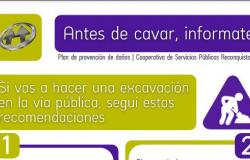NASA published this Thursday a summary of the fifth biennial inter-institutional planetary defense theoretical exercise. NASA’s Planetary Defense Coordination Office, in partnership with FEMA (Federal Emergency Management Agency) and with the assistance of the US Department of State’s Office of Space Affairs, convened the tabletop exercise to inform and evaluate our ability as a nation to respond effectively to the threat of a potentially dangerous asteroid or comet.
Although There are no known significant asteroid impact threats in the foreseeable future, What-if exercises provide valuable information by exploring the risks, response options, and opportunities for collaboration posed by various scenarios, from minor regional damage with little warning to potential global catastrophes predicted years or more ago. even decades in the future.
“The uncertainties in these initial conditions for the exercise allowed participants to consider a particularly challenging set of circumstances,” said Lindley Johnson, planetary defense officer emeritus at NASA Headquarters in Washington. «The impact of a large asteroid is potentially the only natural disaster that humanity has the technology to predict for years. in advance and take measures to prevent it.
During the exercise, participants considered possible national and global responses to a hypothetical scenario in which a previously undetected asteroid was identified that had, based on initial calculations, a 72% chance of hitting Earth in approximately 14 years. However, the preliminary observations described in the exercise were not sufficient to accurately determine the asteroid’s size, composition, and long-term trajectory. To complicate this year’s hypothetical scenario, essential follow-up observations would have to be delayed by at least seven months – a critical loss of time – as the asteroid passed behind the Sun, as seen from Earth’s point of view in space.
Conducting exercises allows government stakeholders Identify and resolve potential problems as part of preparation for any real-world situation. Held in April at the Johns Hopkins Applied Physics Laboratory (APL) in Laurel, Maryland, it brought together nearly 100 representatives from all U.S. government agencies and, for the first time, international planetary defense collaborators.
“Our mission is to help people before, during and after disasters,” said Leviticus Lewis, FEMA manager at NASA’s Planetary Defense Coordination Office. “We work across the country every day before disasters strike to help people and communities understand and prepare for potential risks. In the event of a possible asteroid impact, FEMA would be a leading player in interagency coordination.”
This exercise was the first to use data from the DART mission (Double Asteroid Redirection Test) by NASA, the first demonstration in space of a technology to defend the Earth against possible asteroid impacts. The DART spacecraft, which impacted the small asteroid moon Dimorphos on September 26, 2022, confirmed that a kinetic impactor could change the trajectory of an asteroid. Applying this or any type of technology to a real impact threat would require many years of advance planning.
To help ensure that humanity has the time necessary to assess and respond to a potentially dangerous asteroid or comet, NASA is continuing development of its NEO Surveyor (Near-Earth Object Surveyor), an infrared space telescope designed specifically to accelerate our ability to to discover and characterize most potentially hazardous near-Earth objects many years before they could become an impact threat. The launch date proposed by the NEO Surveyor agency is set for June 2028.
NASA will later release a full after-action report from the tabletop exercise, which will include strengths and weaknesses identified from the response analysis, other discussions during the exercise, and recommendations for improvement. “These results will help shape future exercises and studies to ensure that NASA and other government agencies continue to improve planetary defense readiness,” Johnson said.
NASA established the Planetary Defense Coordination Office in 2016 to manage the agency’s ongoing planetary defense efforts. Johns Hopkins APL managed the DART mission for NASA as a project of the agency’s Planetary Missions Program Office.






